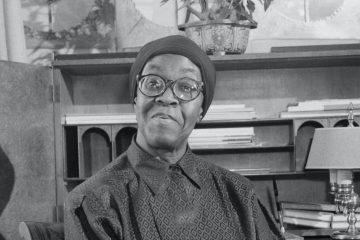Hannah Brooks-Motl at Poetry Magazine:
 Gwendolyn Brooks grew up on Chicago’s South Side in a house her father bought shortly after the poet and her younger brother were born. Located at 4332 South Champlain, it was a comfortable home with a large front porch and backyard. The Brooks family was only the second black family on the block, but as the 1920s slid into the 1930s, African Americans began to move to the area in increasing numbers. Once a “Black Belt” was recognized, a series of discriminatory housing practices started: Chicago’s growing African American population was soon unofficially segregated. The narrow corridor of apartment buildings and houses along State Street could not hope to hold the explosion of skilled and unskilled workers who moved to the city during World War II; one solution was to chop existing houses and apartments into ever smaller units, called “kitchenettes.” These single rooms or series of small rooms, often rented at high profit by predatory landlords, housed entire families who shared kitchens, bathrooms, and much else. They were cramped microcosms of the circumscribed lives endured by most African Americans at the time.
Gwendolyn Brooks grew up on Chicago’s South Side in a house her father bought shortly after the poet and her younger brother were born. Located at 4332 South Champlain, it was a comfortable home with a large front porch and backyard. The Brooks family was only the second black family on the block, but as the 1920s slid into the 1930s, African Americans began to move to the area in increasing numbers. Once a “Black Belt” was recognized, a series of discriminatory housing practices started: Chicago’s growing African American population was soon unofficially segregated. The narrow corridor of apartment buildings and houses along State Street could not hope to hold the explosion of skilled and unskilled workers who moved to the city during World War II; one solution was to chop existing houses and apartments into ever smaller units, called “kitchenettes.” These single rooms or series of small rooms, often rented at high profit by predatory landlords, housed entire families who shared kitchens, bathrooms, and much else. They were cramped microcosms of the circumscribed lives endured by most African Americans at the time.
more here.
